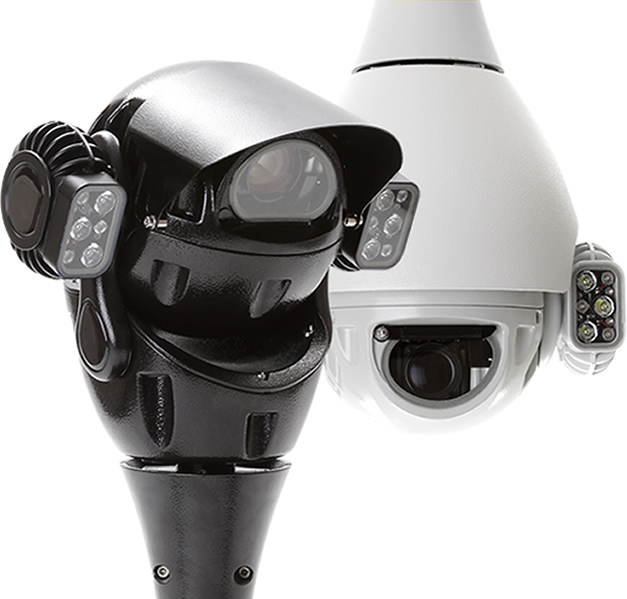If you’re looking to enhance the security of your commercial premises, then there are a number of different surveillance systems to choose from. An Internet Protocol (IP) surveillance system uses network cameras to capture and transmit video footage over a digital network. Using the internet or local area network (LAN), IP systems are digital from end to end. This means they’re equipped with a range of features that can enhance security, monitoring, and data managing capabilities.
What do property owners and managers need to know about IP camera surveillance systems when they’re developing their security strategy?
What is the difference between IP Surveillance and CCTV?
The principal difference between traditional CCTV systems and IP surveillance lies in the technology it uses and how data is transmitted. Traditional CCTV systems use analogue systems that are transmitted over coaxial cable to a central recording device. The quality of the video and the range of functions that the system can deliver are limited by this analogue technology.
IP surveillance systems use digital signals that are transmitted across a network. Digital technology allows for higher-resolution video, scalability, and remote access. IP cameras are also capable of being integrated with other network devices that can provide advanced features such as motion detection, video analytics, and facial recognition. All of these features can bolster site security, giving building owners and managers extra tools to combat the risk of crime
How do IP CCTV systems work?
IP CCTV surveillance systems work by capturing video footage through IP cameras that then convert that footage into digital signals. The signals are then transmitted over a network where they can be accessed in real-time or stored for later review.
Digital data can be stored on network video recorders (NVRs), local storage devices like SD cards, or increasingly on cloud storage services. IP cameras will be used in conjunction with software applications that allow for the management and viewing of the video data.
Users can also access live feeds as well as archived footage from remote locations using web browsers or mobile apps. This accessibility puts building owners and managers in control, giving them an overview of the security situation on their premises wherever they are in the world.
What is the difference between an IP camera and a Wi-Fi camera?
An IP camera transmits data a via wired Ethernet connection, often using Power over Ethernet (PoE) technology for a high-speed and stable connection, that also supplies the camera’s power. A Wi-Fi Camera is a subset of IP cameras, transmitting data wirelessly over a Wi-Fi network. This gives property owners much greater flexibility in placement as it doesn’t require physical cabling. Wi-Fi cameras are reliant on a sufficiently strong and consistent wireless signal, which may be impacted by a range of factors such as distance or obstacles.
Comprehensive IP Surveillance Systems from Protive Security & Surveillance
Modern IP Cameras now offer greater performance, image quality, and recording quality, and can be linked to other systems to offer a complete security system. At Protive Security & Surveillance, we install IP systems that use the latest technology to give business owners flexibility and control over their surveillance systems.
When you choose Protive, you can be sure you’ll receive state-of-the-art, high-quality technology for the best protection possible.
Contact us to find out more.





